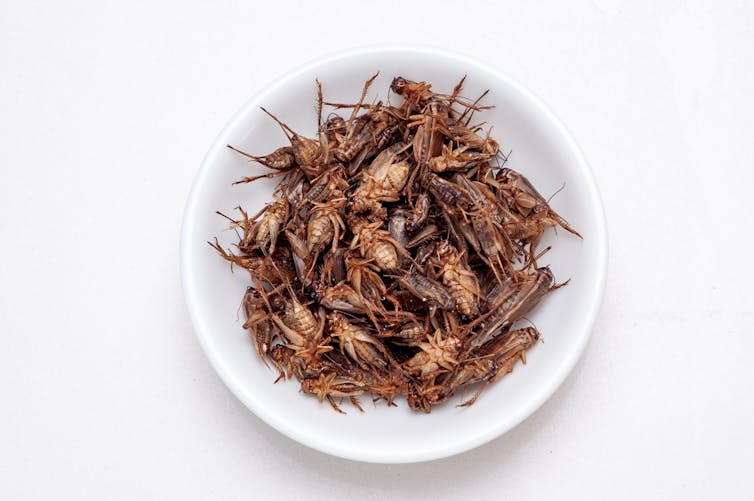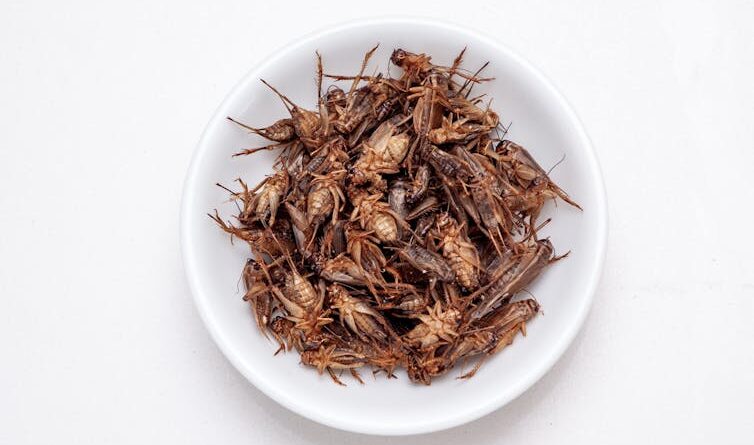Want to eat less meat and dairy? Here are your options for getting enough protein
As more people become aware of the environmental impact of making and eating food and drinks, there is a renewed interest in many western countries in vegetarian, vegan and flexitarian diets, which come with low carbon footprints.
But meat and dairy are still the main source of protein for most adults in these countries. Protein is needed for growth and repair of the body. So if you’re starting to eat less animal products, you need to make sure you’re still getting enough protein.
Many people may think that eating less meat means eating more plant-based meats like veggie burgers. But while these types of protein alternatives are better for the environment because they use less land and produce less greenhouse gases, there are problems.
Some types of plant-based meat can be described as “ultra-processed” and are often nutritionally poor, high in salt and low in iron and vitamin B12 (although they can be low in calories and fat again). Their taste and texture are also often criticized by consumers.
Read more: Which diet will help save our planet: climate change, vegetarian or vegan?
But plant-based meats are far from the only form of non-animal protein available. There are five other broad categories of non-animal protein: pulses, algae, insects, cultured meats, and grains such as oat, wheat, barley, and other grains that are often overlooked. as stable plant proteins.
Here’s what you need to know about consuming more animal-free protein sources.
Pulse
Pulses, such as beans and peas, are the edible seeds of legume plants. Compared to other crops, legumes do not require as much fertilizer, so they produce fewer greenhouse gases. Legumes improve soil health and microbial diversity in fields, and varieties can be selected for greater climate tolerance.
Their protein content ranges from 17% to 30%, and pulses are rich in fiber, vitamins and minerals. Eating pulses helps prevent chronic diseases like heart disease and diabetes too.
Algae
Algae, such as seaweed and spirulina, is another option. Like pulses, algae are rich in vitamins and minerals with a protein content of 50%-60%.
Algae can store or sequester carbon from the atmosphere. Algae has antioxidant and anti-inflammatory properties.
For those who do not like to eat seaweed, using algae as an ingredient in foods such as bread may be more palatable, boosting protein in the process – although it may cause your food is raw or leaves a fishy aftertaste.
Grains
Grains, such as oats and wheat, are often considered carbohydrates. But it is also a notable source of plant protein with a protein content of 7%-18%, and some can lower cholesterol and improve intestinal health.
Now, many grains are used improperly. In Ireland, a very high proportion (89%) of grain is used as animal feed, and animals are used as a source of protein. Eating grains directly instead of using them as feed can reduce greenhouse gas emissions.

Sophie Sparks Photography / Shutterstock
Insects and cultured meat
For more savory dishes, there are options such as insects and traditional meats. Although it is not popular in western countries, insect snack bars and other cooking tools are available. The UK recently became the first country in Europe to accept the use of traditional meat, even in the home.
Read more: Less meat, more microbes in our food future
Special advantages include a lot of insect protein – cricket flour is 45%-70% protein – and the taste of meat and the style of traditional meat. But these are not as socially acceptable as other proteins, due to reasons such as disgust and familiarity. Potential medical and ethical issues are another concern.
#eat #meat #dairy #options #protein
